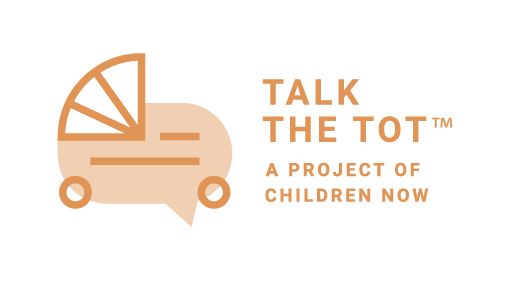PARTS OF A BRAIN
During the early years, babies need nurturing care from caregivers to help the brain grow and develop. Every word and hug helps shape the way in which the brain is actually built and determines whether or not it has a strong foundation. Learn more about how the brain develops and what you can do to help in those early years.
Brain Stem
By birth, this lower part of the brain is the only portion that is already well developed, which is a good thing because this portion of the brain is largely in control of a newborn’s behaviors: grasping, kicking, sleeping, crying, and feeding.
Tips: During a newborn’s first days, hugging, smiling, cuddling, and laughing with them helps them feel safe which can help to avoid any feelings of stress and nurtures the brains growth and development.
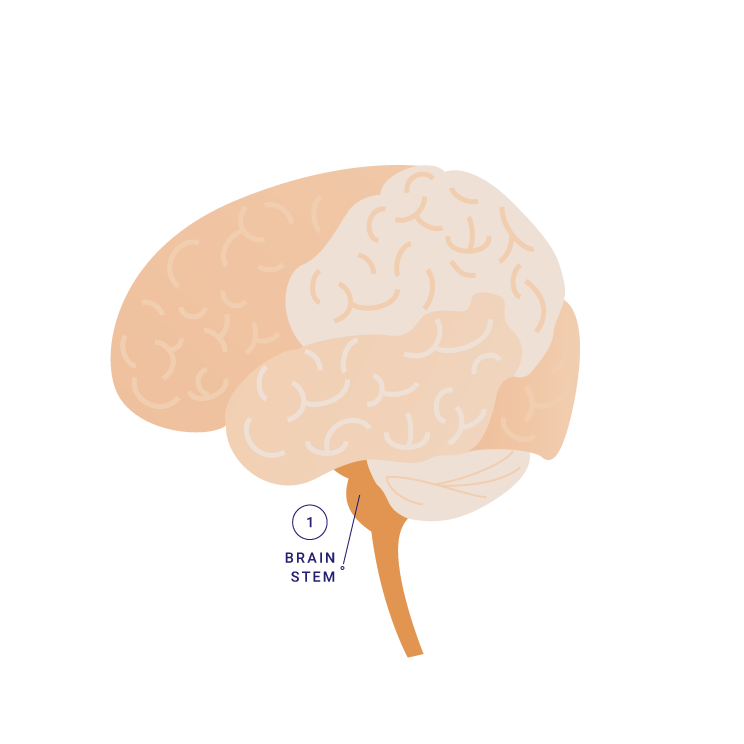
Cerebellum
This portion of the brain is in charge of balance and coordination. From birth to age 1 babies are learning how to coordinate their movements, and as such are moving a lot!
This is the time when babies are developing their gross motor skills – how to roll over, crawl, and sit up — to build the muscles they’ll need to eventually walk, run, and jump.
Tips: It’s important for babies and toddlers to have a safe environments to explore their surroundings and freely move around.
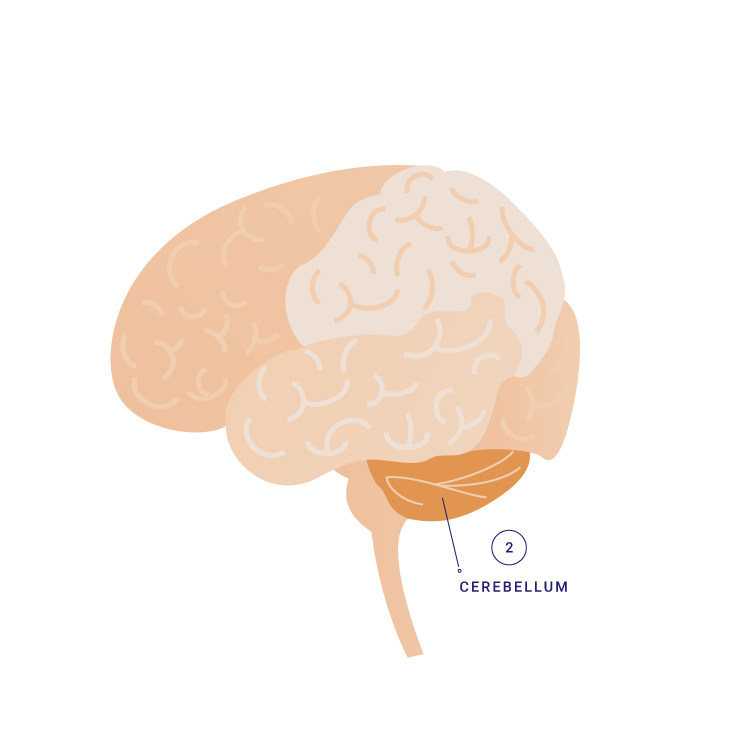
Occipital Lobe
This portion of the brain is in charge of visual processing. Vision is a major source of information for infants. As newborns grow, their vision will improve and they will develop the skills they need to be able to focus, track and scan objects.
Tips: Given that vision is the primary source of information for infants in their first 6 months of life, direct eye contact, smiling, and positive reactions to a baby’s gestures and what they find interesting are important.
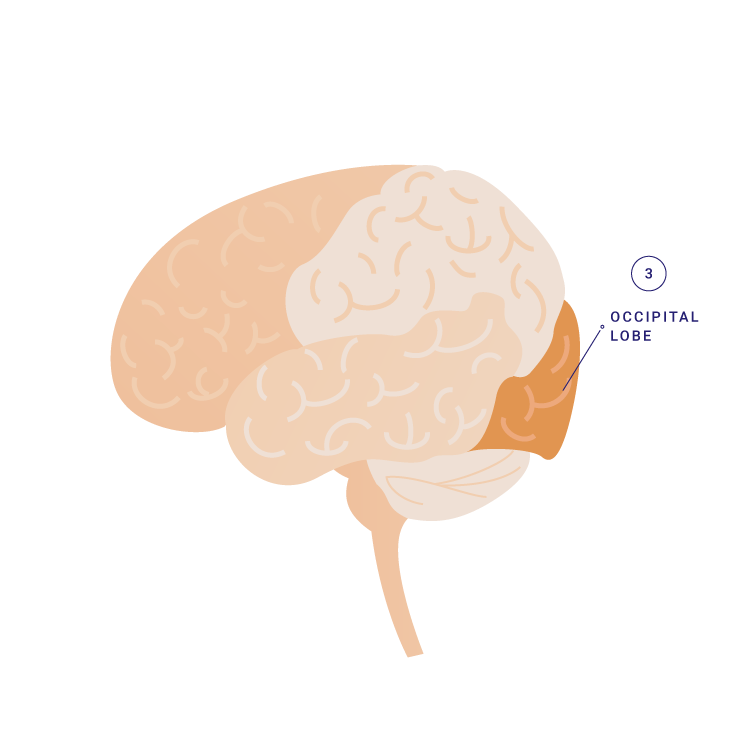
Temporal Lobe
Newborns can hear a variety of sounds and are particularly tuned in to human speech. In fact, when you speak to babies, not only will they hear your voice, but they will also turn their head and eyes in the direction of it.
This part of the brain is also in charge of socio-emotional development. During the second 6 months, babies reach their most significant emotional milestone – the onset of attachment, which is when babies bond to the most important person in their lives, Mom or Dad or other primary caregiver(s). As babies grow, the positive interactions they have with caregivers will help build feelings of trust. This trusting relationship will encourage infants to continue learning about themselves and how to express their thoughts and emotions.
Tips: Babies learn so much when you talk to them during change their diapers, rock them to sleep, feed them. Talking to babies and toddlers during any routine moments is helping to advance their development.
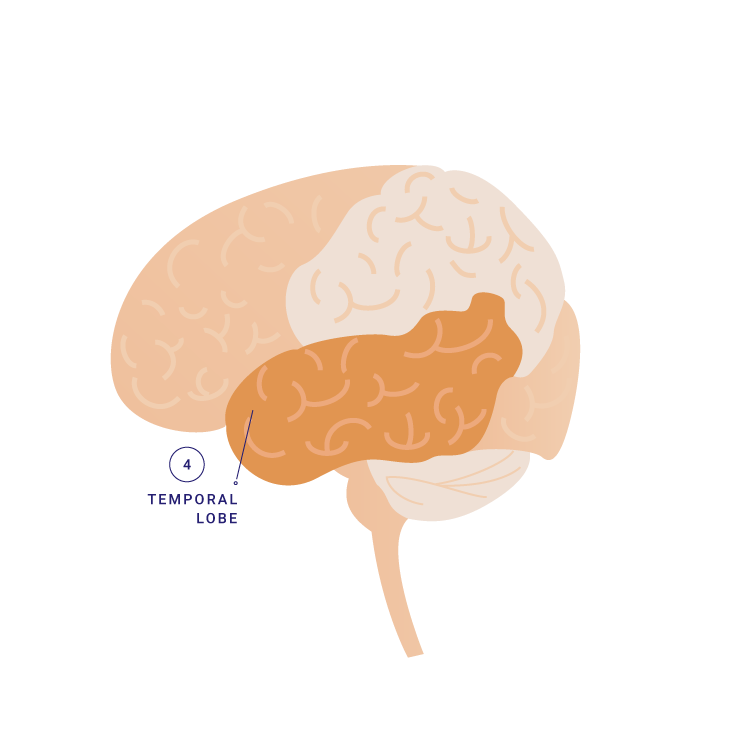
Parietal Lobe
A newborn’s sensitivity to touch is already well developed by birth. From 2-6 months infants are learning about their environment and themselves through touch. For example, babies might touch their cheek and notice it feels different than when a caregiver touches it, thus learning more about the boundaries of their bodies.
The parietal lobe is also responsible for interpreting words. In the early months, babies will communicate through coos or gurgling sounds, and as they continue learning they will start saying words and forming sentences.
Tips: Holding, cuddling, hugging, and rocking babies is “sensory nourishment” for babies and is advancing their healthy growth.
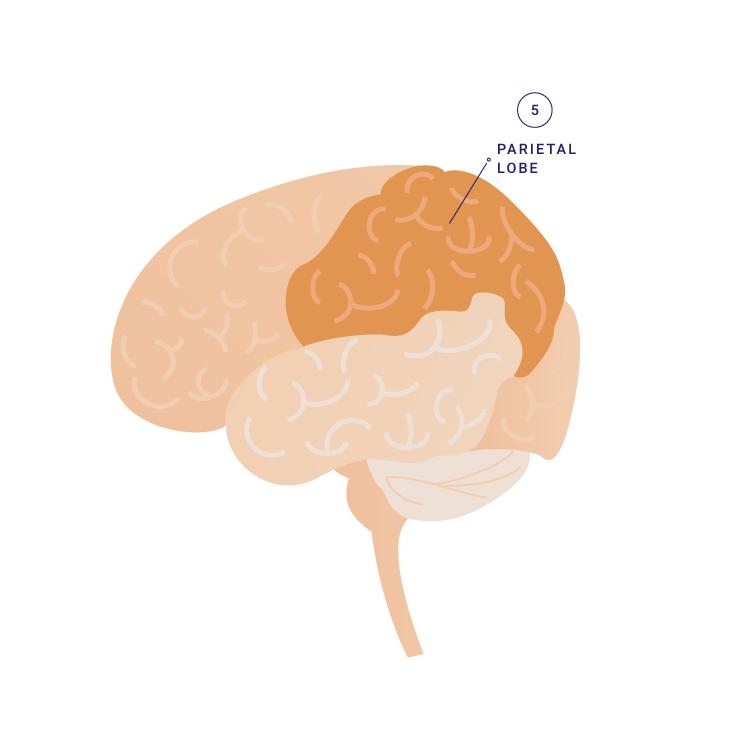
Frontal Lobe
This part of the brain is in charge of thought and behavior. The development of this part of the brain starts later between 6 to 12 months and continues developing into young adulthood.
One of the ways infants learn to exercise their memory is through play and repetition. Play with your baby! Encourage them to move and organize play blocks.
Conclusion: As babies grow, they are taking in and processing every bit of information and knitting them together, setting the foundation for lifelong learning and well-being.
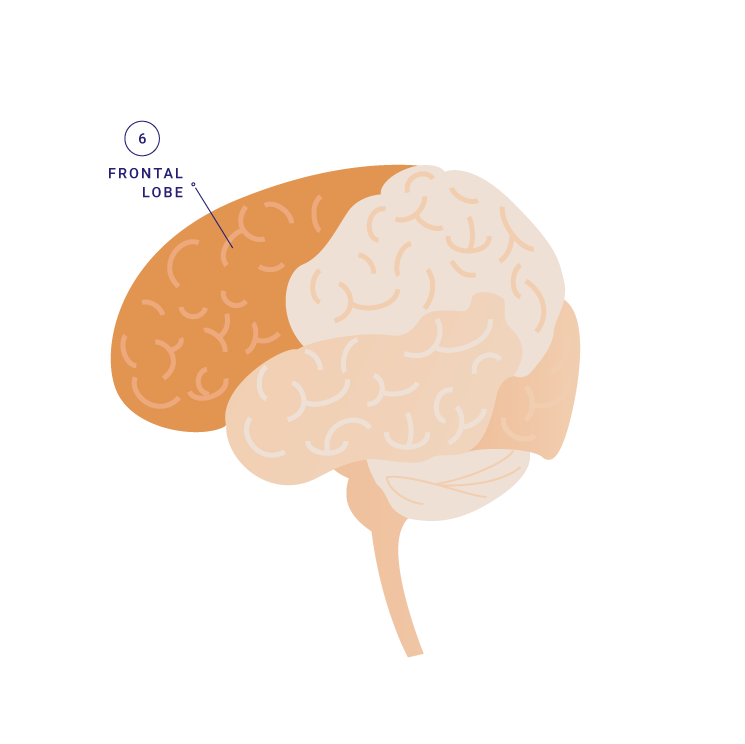
Sources
First 5 CA http://www.first5california.com/learning-center.aspx?id=9
Mayfield Clinic: https://mayfieldclinic.com/pe-anatbrain.htm
Zero to Three: https://www.zerotothree.org/resources/529-baby-brain-map
Have a question?
Contact us at [email protected]
